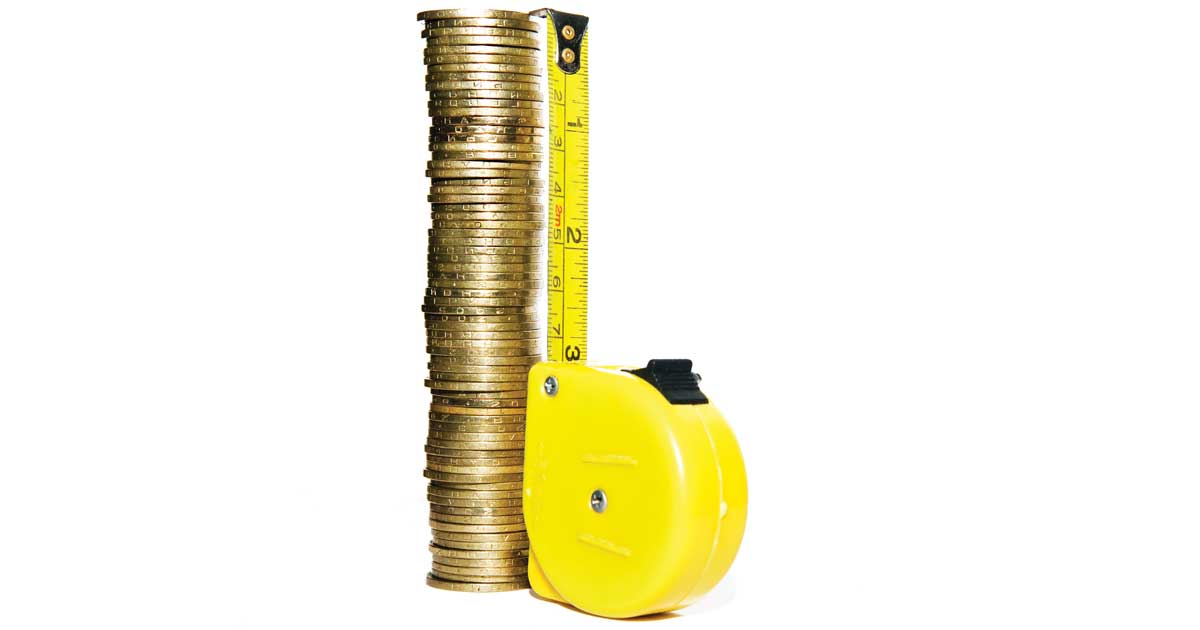19 Jan 2023
Finding finance that fits: funding key investments
New equipment, additional consulting rooms and general refitting are all hallmarks of a practice looking to progress. But such advancements come at a cost, which leads to a natural question: what is the best way of financing these investments?

Image © Photoartbox / iStock

Many businesses, including veterinary practices, will often use “spare cash” to fund a wide range of investments, but this may not be the cheapest form of finance available.
According to Graham Scott, an ex-banker and funding consultant at Shire Vet, practices “should not use working capital or overdraft for this purpose. Long-term assets should be supported by long-term finance”.
In particular, he said: “Anything to do with the structure of the premises is best funded by a bank loan with the term of the loan agreed in line with the size of the requirement.”
So, if the practice is extending, Graham thinks banks will normally agree that the loan be repaid over 25 years.
But where equipment is required, loans should be taken in line with the useful life of the asset. Investment here usually involves speaking to asset finance, HP or leasing providers.
This is a point backed up by David Angus, Braemar Finance sales director. He, too, would encourage clients to fund over terms that align with the economic life of equipment. But on top of that, Braemar would “also consider the income generation or cost savings that the equipment will provide and where possible will provide repayment structures that help match the cash flows.”
Overall, though, Graham said debt structure “should generally reflect the asset being financed… you wouldn’t buy a car over 25 years, but you would buy a property over this term”.
In his view, the purpose of the debt should always be the main driver.
So, bank loans, HP and leasing all have a part to play, but it depends on what is being purchased.
Consider Braemar’s offer. David’s firm finances equipment such as scanners and x-ray systems, ultrasound, IT, consulting and testing equipment, through hire purchase or a finance lease facility. He said “We can fund almost anything within a veterinary practice.”
But it’s important not to pigeonhole any finance house as, say, an asset funder only. For example, David said: “Braemar can provide unsecured business loans to help fund fit outs, building updates or most other business needs, including cash flow and tax loans, partner buy ins or business acquisitions.”
He added: “Facilities are available to new starts and established businesses.”
And then Braemar can help with commercial mortgages via another part of the business. In other words, it serves to ask about the entirety of an offering.
Another way to tackle the need to finance is to use two loan facilities with one running over a short term to cover the immediate requirement, and the other over a longer term to spread the cost of repayment.
Even so, the tax implications of funding equipment through a hire purchase or finance lease facility do differ. And in David’s experience, most veterinary practices still prefer to use hire purchase “as it ensures ownership of the asset passes to the practice at the end of the term”.
Variable costs
For other projects, though, such as fit-outs, where potential for variable costs exists, it’s important the practice has sufficient facilities to meet the project costs. Here, Braemar would make funds available to draw down in tranches, so the practice only needs to borrow when certain milestones are reached. Funded through unsecured loans, Braemar would aim to provide seven-year terms which, David said: “Provide a lot of scope to manage replacement cycles of equipment and projects.”
Something else to consider is a consolidated loan. Here, a bank lends a round sum for less specific purposes, and where the loan is partly for equipment and partly for capital purposes, to overcome an impending cashflow problem. An example of this given by Graham Scott is a tax bill, VAT and monies needed to repay a supplier to obtain maximum discount – just at the same time that a new piece of kit is needed.
For Graham, “deals depend on cash flow and the financial resources of the borrower”.
But regardless of the tack taken, he warned: “Look out for any costs relating to early repayment of part or all of the loan.”
Interestingly, Graham thinks that the big four banks do still have a role to play when it comes to finance, but he said: “Finding the right person to talk to is the main problem.”
It’s for this reason he thinks, understandably, that “a practice is no different to any other business”. He said: “Using a credit broker for procurement enables them to cover the field without doing the work themselves.”
It’s important to remember that the role of the broker is to represent the client, not the bank. From experience, a good broker will know the market and which bank is looking to expand its portfolio at any given time. Graham said: “Finance, like most things, is cyclical and as one bank looks to be positive in its approach, another will rein back.”
A changing market
So, with the economy being in turmoil, it’s fair to ask if lending is more expensive or harder to obtain?
In Graham’s opinion, no doubt exists that the market’s appetite to lend has been diminished. However, he said: “The veterinary sector is one where there has been a historic resilience to recession, and so from our experience, the banks and other funders feel comparatively protected and are still prepared to lend.”
It’s a given that lending is more expensive as a result of the rise in the base rate. However, costs can potentially be cut by a broker who will negotiate with lenders.
In driving this point home, Graham said: “If practices go directly to their own bank, they are certainly unlikely to be offered the keenest rate… unless they are put under pressure.”
One other thing to watch for if a broker is the preferred option: use a service that demands no fees.
If an established business is borrowing, lenders will look at the client’s track record and ability of the business to generate cash.
Graham said: “The first and last concern of a bank should always be about the ability of a business to service debt, so robust financial information is paramount.”
Key indicators are whether accounts are produced in a timely manner, management accounts current, tax affairs up to date, and if any previous borrowing was repaid on time.
Graham said: “The answer to all these questions will have a direct bearing on whether a bank will support a business.
“A well-produced business plan covering pertinent areas of the business is the key to getting the bank credit department on side.”
From Braemar’s perspective, David said the information his firm requires depends on the size and complexity of the request, as well as the applicant.
Although, he added: “We would generally expect to be provided with recent bank statements and financial statements to support a credit application. In certain situations, we may also ask for forecasts or projections – particularly if the practice is making a significant investment relative to the size of the existing practice.”
Now, if funds for a start-up are sought, a business plan is even more vital. Here, Graham believes the plan should cover those areas the bank will want to assess: the background of the individuals, their personal credit record, and a reasoned assessment of the demographics of the start-up area.
As to why business plans are helpful, David explained: “They allow us to assess the viability of a proposal.”
Like Graham, he believes that “a good plan will include background on the key stakeholders in the business, key services, business and financial objectives, along with financial forecasts and projections”.
Graham’s advice for new start customers is that they should seek the help of a specialist veterinary accountancy practice to produce these numbers.
Just like Graham, David also recommends that accountants help construct a business plan. He added: “Our area managers can also give guidance on the detail required relative to the actual request.”
A word of caution from Graham, though: “Banks commonly push back when borrowers are reluctant to put in their own money.”
A broker, he said, can help to negotiate the delicate balance between how much is put down and how much is held back.
Allied to this is the matter of security. Personal guarantees and second charges are all part of the armoury banks use to protect their own position. Again, Graham said brokers will negotiate on clients’ behalf.
Tax breaks
Lastly, when investing, the matter of tax breaks exists and, helpfully, HMRC has the super-deduction tax allowance. On this, David explained: “From 1 April 2021 until 31 March 2023, limited companies investing in qualifying new plant and machinery assets will be able to claim a 130% capital allowance.”
This means 130% of the cost can be set against the corporation tax bill instead of 100%. Those that don’t qualify can make use of the annual investment allowance, which works similarly for acquisitions totalling £1m, until 31 March 2023.
Of course, as both Graham and David note, specific advice from an accountant or tax advisor is essential.
Summary
Many ways to invest exist, but the key is good advice.
Vets need to hunt around for the best option for them – direct or via a broker – and make an investment on good advice.
And those able to use the super-deduction can make a big saving – if they’re quick.
Latest news

Practice developments
Price freezes, incentive ban and comparison site among CMA remedy options
1 May 2025
Small animal
Expert Insights: The role of monoclonal antibodies (mAbs) in osteoarthritis (OA) management for pets
Sponsored
10 Mar 2025

